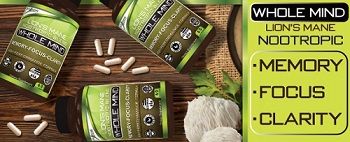Anthracobune and Cambaytherium move closer to Phenacodus
Housekeeping continues
in the large reptile tree (LRT, 2338 taxa). Now the anthracobunids, Anthracobune and Cambaytherium (Figs 1–2) nest with Phenacodus among the pantodonts basal to elephants and sloths.
Figure 1. Anthracobune and Cambaytherium to scale with Phenacodus and Ectocion cedrus.
” data-medium-file=”https://pterosaurheresies.wordpress.com/wp-content/uploads/2025/09/anthracobune588.jpg?w=300″ data-large-file=”https://pterosaurheresies.wordpress.com/wp-content/uploads/2025/09/anthracobune588.jpg?w=584″ class=”size-full wp-image-94642″ src=”https://pterosaurheresies.wordpress.com/wp-content/uploads/2025/09/anthracobune588.jpg” alt=”Figure 1. Anthracobune and Cambaytherium to scale with Phenacodus and Ectocion cedrus. ” width=”584″ height=”572″ srcset=”https://pterosaurheresies.wordpress.com/wp-content/uploads/2025/09/anthracobune588.jpg?w=584&h=572 584w, https://pterosaurheresies.wordpress.com/wp-content/uploads/2025/09/anthracobune588.jpg?w=150&h=147 150w, https://pterosaurheresies.wordpress.com/wp-content/uploads/2025/09/anthracobune588.jpg?w=300&h=294 300w, https://pterosaurheresies.wordpress.com/wp-content/uploads/2025/09/anthracobune588.jpg 588w” sizes=”(max-width: 584px) 100vw, 584px” />
Figure 1. Anthracobune and Cambaytherium to scale with Phenacodus and Ectocion cedrus.
Fanged Ectocion cedrus
(Fig 1) is also part of this clade and likely the basal member because it was smaller = phylogenetic miniiaturuzation and shared several traits with the proximal outgroup taxon, the massive herbivore, Coryphodon.
Figure 2. The manus and pes of Phenacodus compared to the partial manus of Cambaytherium.
” data-medium-file=”https://pterosaurheresies.wordpress.com/wp-content/uploads/2025/09/cambaytherium-phenacodus_manus.pes588.jpg?w=184″ data-large-file=”https://pterosaurheresies.wordpress.com/wp-content/uploads/2025/09/cambaytherium-phenacodus_manus.pes588.jpg?w=584″ class=”size-full wp-image-94643″ src=”https://pterosaurheresies.wordpress.com/wp-content/uploads/2025/09/cambaytherium-phenacodus_manus.pes588.jpg” alt=”Figure 2. The manus and pes of Phenacodus compared to the partial manus of Cambaytherium. ” width=”584″ height=”954″ srcset=”https://pterosaurheresies.wordpress.com/wp-content/uploads/2025/09/cambaytherium-phenacodus_manus.pes588.jpg?w=584&h=954 584w, https://pterosaurheresies.wordpress.com/wp-content/uploads/2025/09/cambaytherium-phenacodus_manus.pes588.jpg?w=92&h=150 92w, https://pterosaurheresies.wordpress.com/wp-content/uploads/2025/09/cambaytherium-phenacodus_manus.pes588.jpg?w=184&h=300 184w, https://pterosaurheresies.wordpress.com/wp-content/uploads/2025/09/cambaytherium-phenacodus_manus.pes588.jpg 588w” sizes=”(max-width: 584px) 100vw, 584px” />
Figure 2. The manus and pes of Phenacodus compared to the partial manus of Cambaytherium.
Cambaytherium thewissi
(Rose et al. 2014; Eocene, 55 mya; 45-75 lbs) was originally considered a basal perissodactyl, but nests here between Anthracobune and Phenacodus. The posterior mandible has a long retroarticular process as in Anthracobune. Cambaytherium was found on the marine coastline of island India, close to where pakicetid aand archaeocete whales were convergently evolving from terrestrial tenrec ancestors.
Anthracobune pinfoldi
(Pilgrim 1940; Kumar 1991, middle Eocene, size of a small tapir) The anthracobunids were originally considered proboscideans, like Elephas. Cooper et al. 2014 nested them with perissodactyls. Here Anthracobune nests with the Phenacodus basal to elephants. Anthracobunids have small and simple upper and lower incisors and relatively small canines. The naris opens dorsally signaling an aquatic niche or a flexible proboscis. The retroarticular process is the largest among all mammals.
Apologies for not getting this right the first, second or third times.
References
Cooper LN, Seiffert ER, Clementz M, Madar SI, Bajpai S, Hussain ST, Thewissen JGM 2014. Anthracobunids from the Middle Eocene of India and Pakistan Are Stem Perissodactyls. PLoS ONE. 9 (10): e109232. doi:10.1371/journal.pone.0109232. PMID 25295875.
Kumar K 1991. Anthracobune aijiensis nov. sp. (Mammalia: Proboscidea) from the Subathu Formation, Eocene from NW Himalaya, India”. Geobios. 24 (2): 221–39. doi:10.1016/s0016-6995(91)80010-w. OCLC 4656806310.
Leidy J 1850. [Abstract of remarks made before a meeting of the Academy of Natural Sciences of Philadelphia, December 17th, 1850]. Proceedings of the Academy of Natural Sciences of Philadelphia 5(1):121-122.
Pilgrim GE 1940. Middle Eocene mammals from north-west Pakistan. Proceedings of the Zoological Society. B. London. 110: 127–152.
Rose, KD et al. (8 other authors) 2014. Early Eocene fossils suggest that the mammalian order Perissodactyla originated in India. Nature Communications. 5 (5570). doi:10.1038/ncomms6570.
Rose KD et al, 2020. Anatomy, Relationships, and Paleobiology of Cambaytherium (Mammalia, Perissodactylamorpha, Anthracobunia) from the lower Eocene of western India, Journal of Vertebrate Paleontology (2020). DOI: 10.1080/02724634.2020.1761370
wiki/Cambaytherium
wiki/Anthracobune
Source: https://pterosaurheresies.wordpress.com/2025/09/24/anthracobune-and-cambaytherium-move-closer-to-phenacodus/
Anyone can join.
Anyone can contribute.
Anyone can become informed about their world.
"United We Stand" Click Here To Create Your Personal Citizen Journalist Account Today, Be Sure To Invite Your Friends.
Before It’s News® is a community of individuals who report on what’s going on around them, from all around the world. Anyone can join. Anyone can contribute. Anyone can become informed about their world. "United We Stand" Click Here To Create Your Personal Citizen Journalist Account Today, Be Sure To Invite Your Friends.
LION'S MANE PRODUCT
Try Our Lion’s Mane WHOLE MIND Nootropic Blend 60 Capsules
Mushrooms are having a moment. One fabulous fungus in particular, lion’s mane, may help improve memory, depression and anxiety symptoms. They are also an excellent source of nutrients that show promise as a therapy for dementia, and other neurodegenerative diseases. If you’re living with anxiety or depression, you may be curious about all the therapy options out there — including the natural ones.Our Lion’s Mane WHOLE MIND Nootropic Blend has been formulated to utilize the potency of Lion’s mane but also include the benefits of four other Highly Beneficial Mushrooms. Synergistically, they work together to Build your health through improving cognitive function and immunity regardless of your age. Our Nootropic not only improves your Cognitive Function and Activates your Immune System, but it benefits growth of Essential Gut Flora, further enhancing your Vitality.
Our Formula includes: Lion’s Mane Mushrooms which Increase Brain Power through nerve growth, lessen anxiety, reduce depression, and improve concentration. Its an excellent adaptogen, promotes sleep and improves immunity. Shiitake Mushrooms which Fight cancer cells and infectious disease, boost the immune system, promotes brain function, and serves as a source of B vitamins. Maitake Mushrooms which regulate blood sugar levels of diabetics, reduce hypertension and boosts the immune system. Reishi Mushrooms which Fight inflammation, liver disease, fatigue, tumor growth and cancer. They Improve skin disorders and soothes digestive problems, stomach ulcers and leaky gut syndrome. Chaga Mushrooms which have anti-aging effects, boost immune function, improve stamina and athletic performance, even act as a natural aphrodisiac, fighting diabetes and improving liver function. Try Our Lion’s Mane WHOLE MIND Nootropic Blend 60 Capsules Today. Be 100% Satisfied or Receive a Full Money Back Guarantee. Order Yours Today by Following This Link.






